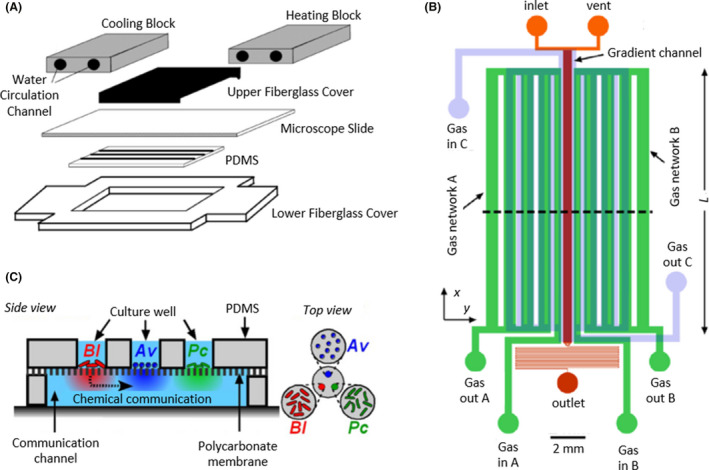Fig. 5.

Microfluidic devices with multiple floors.
A. The bottom floor made by PDMS consisted of a camera to grow bacteria and confined by two fiberglass covers, whereas, the upper floor was a water circuit with two blocks, a cooling and a heating block (grey), to create a temperature gradient. Adapted from (Salman et al., 2006). B. Microfluidic device with four floors to control bacterial culture and the oxygen environment: two lower layers, 37 µm and 150 µm deep, were filled with bacterial culture (red and orange), a 150 µm deep layer was a channel circuit for gases A and B (green) and a 340 µm deep layer was a circuit for gas C (blue). Adapted from (Adler et al., 2012). C. Side and top view of a microfluidic device with two layers, one for bacterial culture and the other to allow chemical communication, separated by a polycarbonate permeable membrane. The upper floor consisted of three chambers with three independent bacterial cultures, Av (Azotobacter vinelandii in blue), Bl (Bacillus licheniformis in red) and Pc (Paenibacillus curdlanolyticus in green), whose chemicals diffused to the main chamber of the bottom floor. Adapted from (Hyun et al., 2008), copyright (2008) National Academy of Sciences, U. S. A. All figure panels were reproduced/adapted with permission from the corresponding publisher and/or journal. Credits for these figures are provided in the References section of the manuscript.
